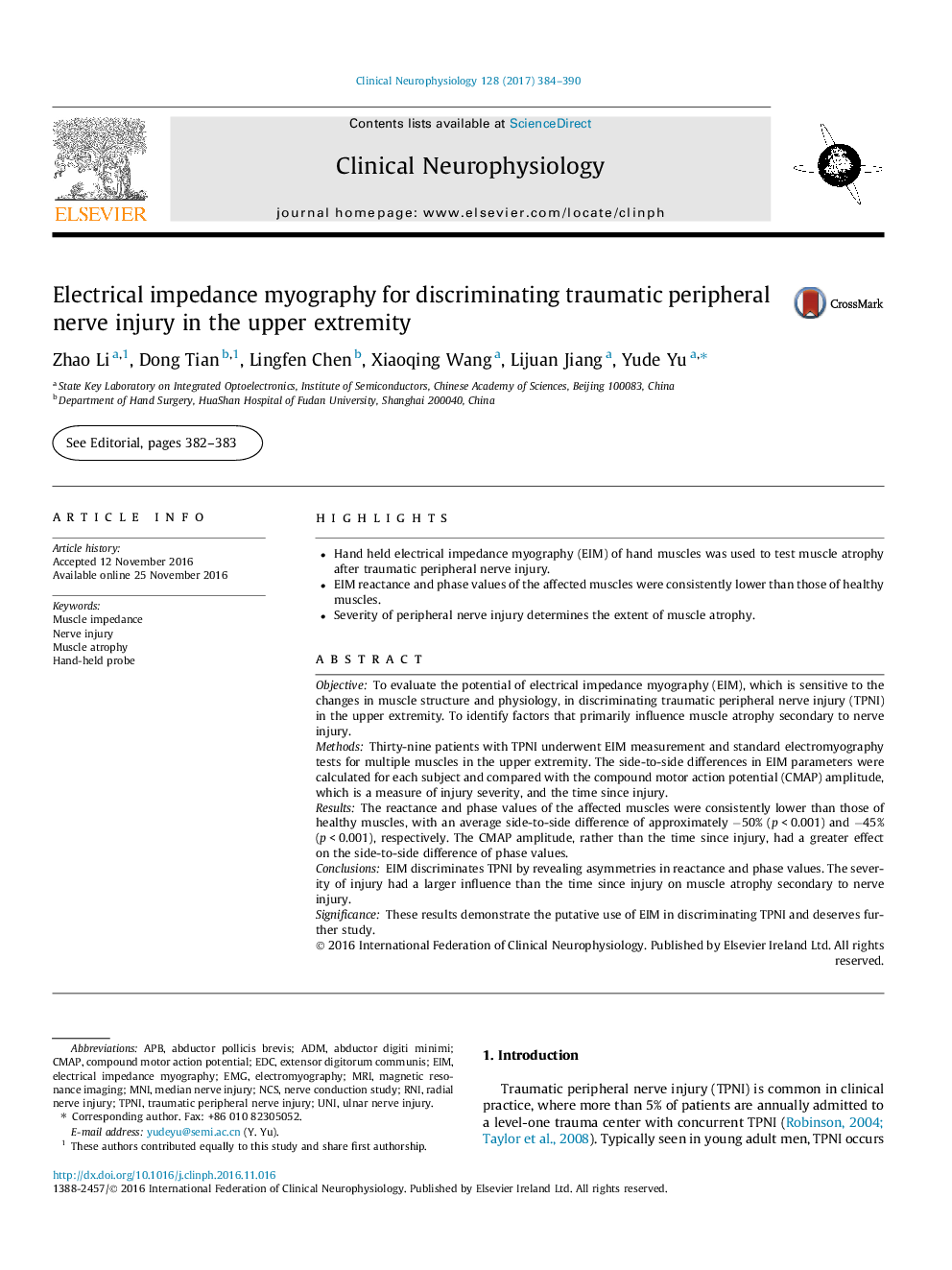| Article ID | Journal | Published Year | Pages | File Type |
|---|---|---|---|---|
| 5627804 | Clinical Neurophysiology | 2017 | 7 Pages |
â¢Hand held electrical impedance myography (EIM) of hand muscles was used to test muscle atrophy after traumatic peripheral nerve injury.â¢EIM reactance and phase values of the affected muscles were consistently lower than those of healthy muscles.â¢Severity of peripheral nerve injury determines the extent of muscle atrophy.
ObjectiveTo evaluate the potential of electrical impedance myography (EIM), which is sensitive to the changes in muscle structure and physiology, in discriminating traumatic peripheral nerve injury (TPNI) in the upper extremity. To identify factors that primarily influence muscle atrophy secondary to nerve injury.MethodsThirty-nine patients with TPNI underwent EIM measurement and standard electromyography tests for multiple muscles in the upper extremity. The side-to-side differences in EIM parameters were calculated for each subject and compared with the compound motor action potential (CMAP) amplitude, which is a measure of injury severity, and the time since injury.ResultsThe reactance and phase values of the affected muscles were consistently lower than those of healthy muscles, with an average side-to-side difference of approximately â50% (p < 0.001) and â45% (p < 0.001), respectively. The CMAP amplitude, rather than the time since injury, had a greater effect on the side-to-side difference of phase values.ConclusionsEIM discriminates TPNI by revealing asymmetries in reactance and phase values. The severity of injury had a larger influence than the time since injury on muscle atrophy secondary to nerve injury.SignificanceThese results demonstrate the putative use of EIM in discriminating TPNI and deserves further study.
